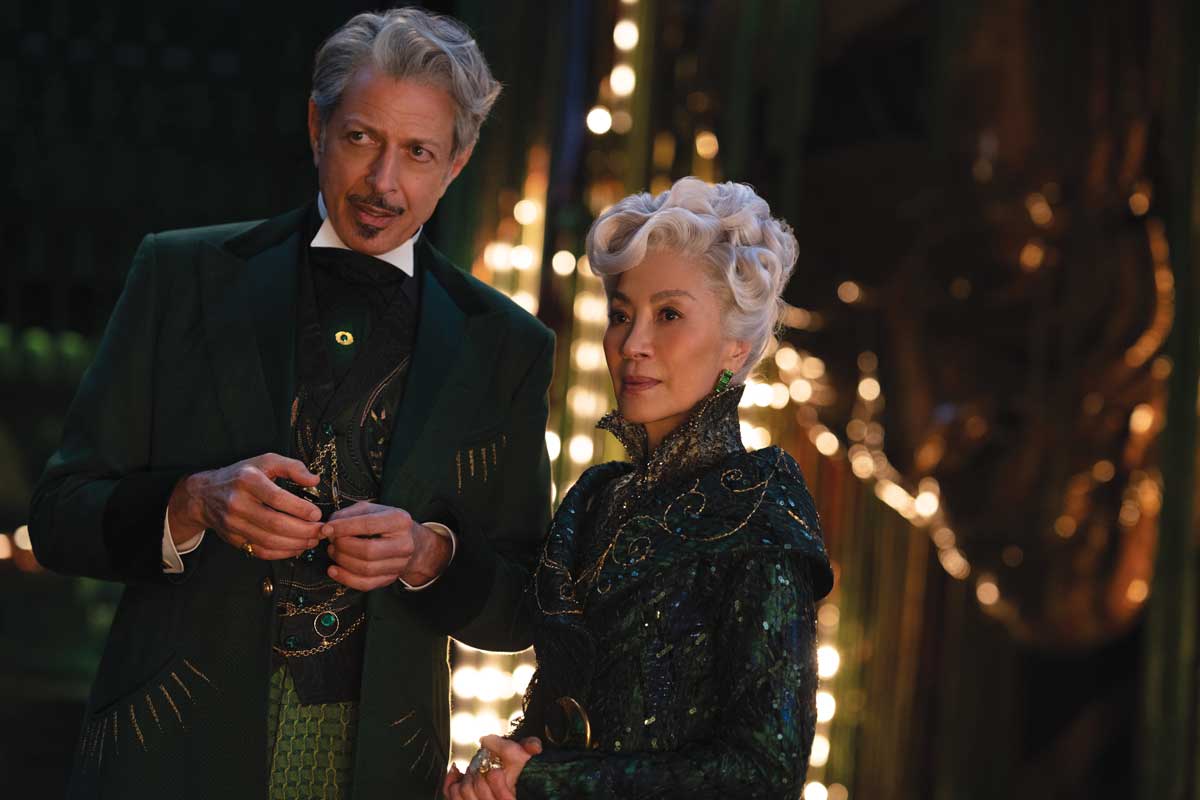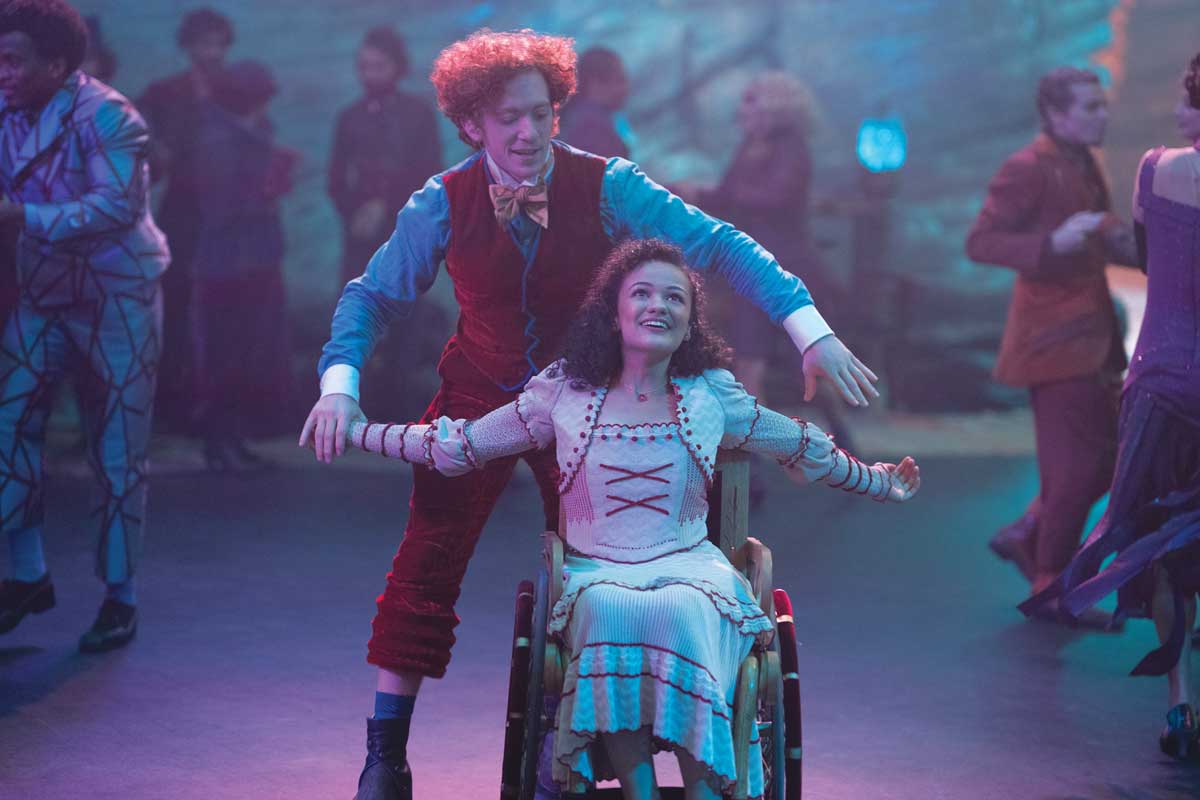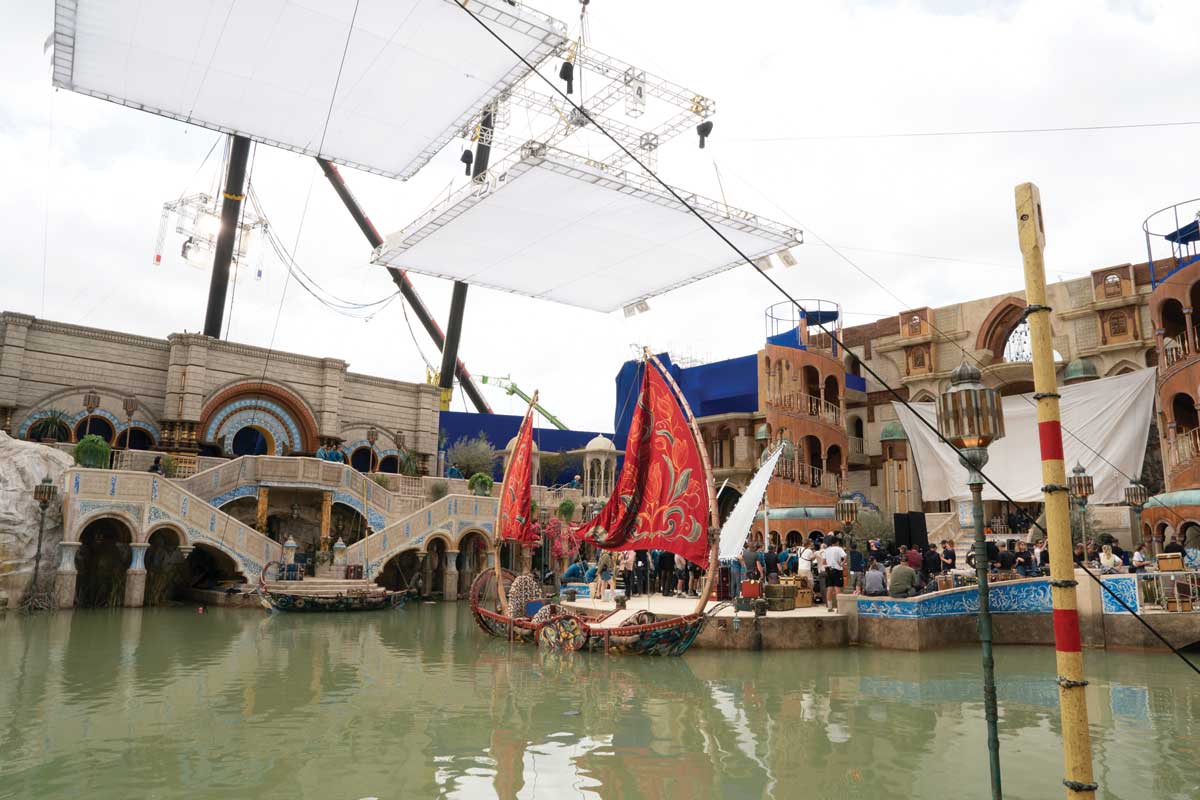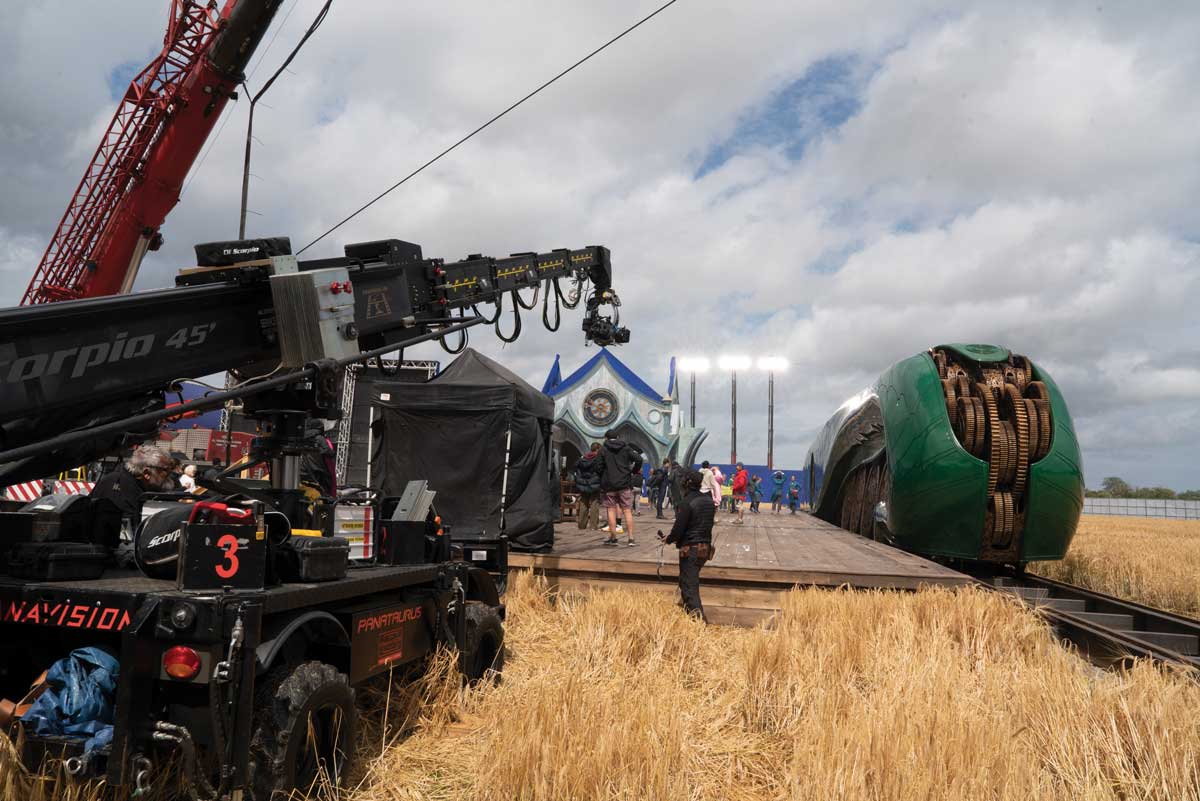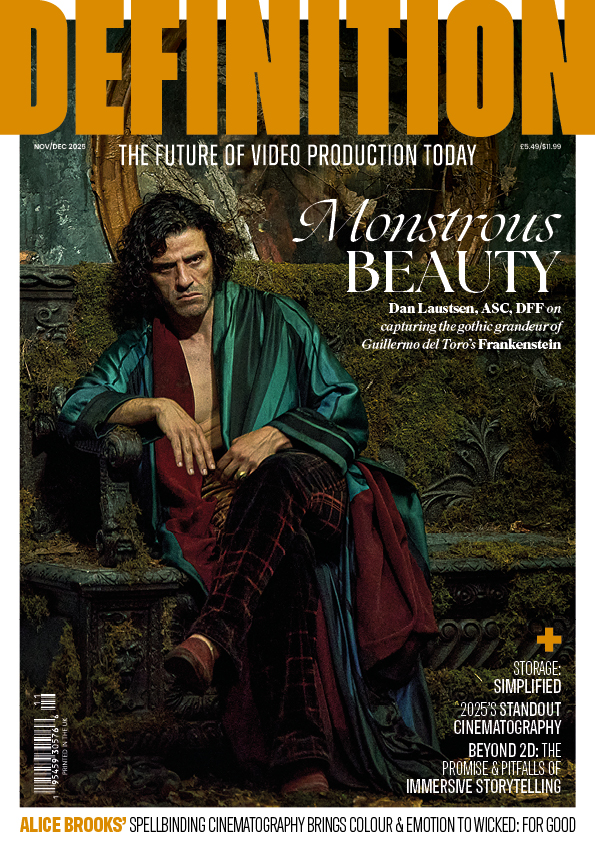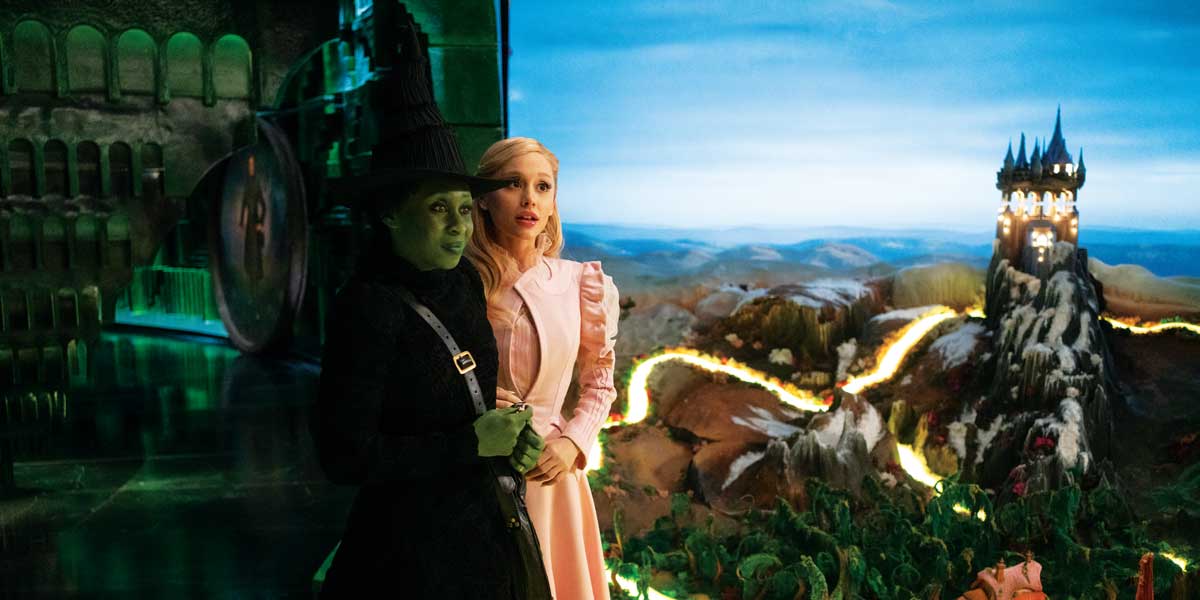
Wicked
Posted on Oct 18, 2024 by Samara Husbands
Defying gravity
Cinematographer Alice Brooks brings her passion for visual storytelling to Wicked, the much-anticipated big-screen adaptation of the beloved musical. Will Lawrence finds out more
Cinematographer Alice Brooks has just walked out of our interview. Thankfully, the move is motivated by kindness and she soon returns. When she does, she is clutching a black & white feather in a frame. This piece of plumage, it transpires, is at least 30 years old and – as the frame attests – holds some significance.
For our purposes, its story begins on a beach in Santa Monica, California, when Brooks was 15 years old. She was an actress at the time and, earlier that day, had completed her seventh audition for the film While You Were Sleeping. “In my heart, I knew I wasn’t getting the job,” she recalls. “To shake it off, my mum took me for a walk and I told her my dream – I didn’t want to be an actor anymore, I wanted to be a cinematographer.”
As soon as she articulated her dream – to both her mother and the universe – Brooks spotted a beautiful black & white feather nestled in the sand. “I picked it up and made the commitment,” she says, “knowing there was a long road ahead.”
The road has been long but has reached lofty heights, carrying Brooks from USC’s School of Cinematic Arts to the DOP’s chair on numerous shows and movies. This includes several high-profile musicals with director and college friend Jon M Chu, such as TV show The LXD as well as features Jem and the Holograms (2015) and the much-lauded In the Heights (2021). Most recently, it bisected with one of the most famous roads of all time: one paved with yellow bricks.
Reuniting with Chu, Brooks has shot the forthcoming big-screen adaptation of stage musical Wicked, which is a loose adaptation of the 1995 Gregory Maguire novel Wicked: The Life and Times of the Wicked Witch of the West (which is in turn based on L Frank Baum’s 1900 novel The Wonderful Wizard of Oz and the much-loved movie, released in 1939).
It’s a fitting project for Brooks. “My mother loved dance,” shares Brooks, who also lensed tick, tick… BOOM! (2021), the directorial debut from Hamilton creator Lin-Manuel Miranda.
”She loved music; our house was always filled with Broadway tunes. And The Wizard of Oz? Always, right? I was Dorothy for Halloween one year – it was definitely a large part of growing up: the yellow brick road, dreams, wish fulfilment and the idea of home.
“Almost all the movies I’ve made in the last few years have been about finding what home is,” she continues, “as well as what your family is and who the most important people in your life are. That’s what Wicked is about; it’s the epic world of Oz, but at its heart is this relationship between Elphaba and Glinda.”
Elphaba and Glinda are Wicked’s central characters brought together at Shiz University in the Land of Oz. Elphaba (played in the movie by Cynthia Erivo) is a misunderstood young woman with green skin, who later becomes the Wicked Witch of the West. Meanwhile, Glinda (Ariana Grande) strives for popularity before maturing into Glinda the Good. Their metamorphoses are prompted by their interactions with the Wizard (played by Jeff Goldblum).
The story unfolds over the course of two films, shot simultaneously in the UK over nine months of principal photography. The production took place at Sky Studios in Elstree and on the expansive sets that sprang up in Ivinghoe, Buckinghamshire.
“I love all the interior sets of Emerald City,” enthuses Brooks, who goes on to reference the last 40 minutes of the first movie from the moment the song One Short Day ends. “It’s this long sunset scene where the sun gradually disappears,” she adds. “We call it the Hall of Grandiosity, a hallway where Elphaba and Glinda walk to meet the Wizard.
“They enter the throne room – one of the most exciting places to light. It was magical and huge. People can’t believe the ceiling goes all the way to the top of our stage. Everyone assumes it’s a set extension, but it’s a real ceiling with real lights, and the Wizard’s head is there too: a 20-foot tall, real puppet.”
It’s a key point in the film, leading to the moment when Elphaba is first described as the Wicked Witch. Accompanied by a giant balloon and a towering staircase over 50 feet tall, Brooks shares her insights with genuine enthusiasm. She is a woman who loves her job, and this role in particular allowed her to fully express her appreciation for colour and visual tones.
For instance, keen-eyed viewers will notice the correlation between Elphaba and the sunset, as well as Glinda and the sunrise. “When Jon and I talked about themes, we discussed the idea that lightness is not always light and the darkness is not always dark. Good is not simply good and evil is not always evil.”
Brooks and her fellow filmmakers found inspirational cues in Baum’s poetry – which is rife with colour reference – and in W W Denslow’s original illustrations. “You can see the beautiful colours throughout the book,” she says, “and it definitely inspired the set design.”
To film Wicked, Brooks chose the ALEXA 65. “The largest sensor we could use is the equivalent of 70mm film,” she adds. “We then shot with anamorphic lenses, but opted for a very subtle anamorphic effect.” Indeed, the lenses were unique, developed in collaboration with Dan Sasaki at Panavision. “As soon as I got the movie, I began working with Panavision to develop the lenses,” she explains. “Dan had this idea for a new lens and created prototypes. We’re the only movie to have shot with them.”
Brooks shared her lookbook and visual references with Sasaki. “I wanted the movie to have a soft, effervescent feel with a slightly low contrast,” she describes. “Panavision lenses usually have a blue horizontal flare, but we decided to go with an amber one. I felt blue was not the right choice for Wicked because of all the green and pink. Instead, we created a beautiful blue-amber flare that adds a touch of magic.”
The magic Brooks and Chu brought to the picture is certainly palpable – its execution boosted by the filmmakers’ use of Unreal Engine. “At the very beginning, I could go into the computer using Unreal Engine and fly around a set with any lens. We could pre-light the set to see if the lighting and lamps were right.
“For the incomplete sets – such as Emerald City’s exterior – we were able to establish our camera positions and rehearse the moves. I could go back to the set deck and point out, ‘These things are in the way’. Additionally, I would speak with [production designer] Nathan Crowley and say, ‘I need bigger windows here’, or ‘I need more space for the crane to get through.’ It became a great tool for communication.”
As our communication draws to a close, Brooks moves her black & white feather, and I notice a crack in the frame. Brooks smiles. “I’ve often thought I should replace it, but then in Wicked – when Elphaba first meets Glinda in the dorm room – she gets so mad that their patio door cracks,” she shares. “That crack in the glass is where Elphaba begins to find her power.” She smiles at the parallel. “I think I’ll keep the broken frame.”
This feature was first published in the November 2024 issue of Definition.


